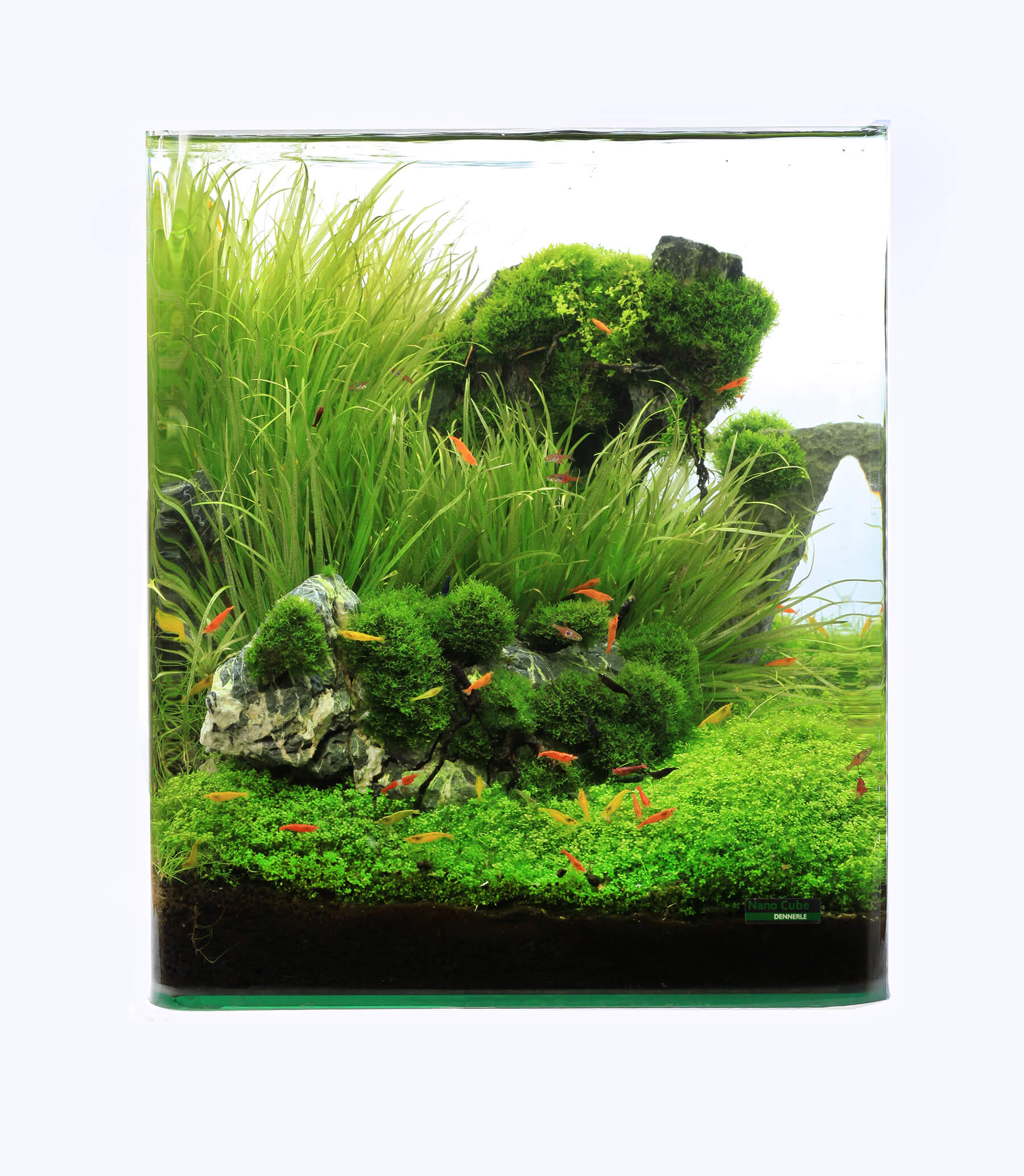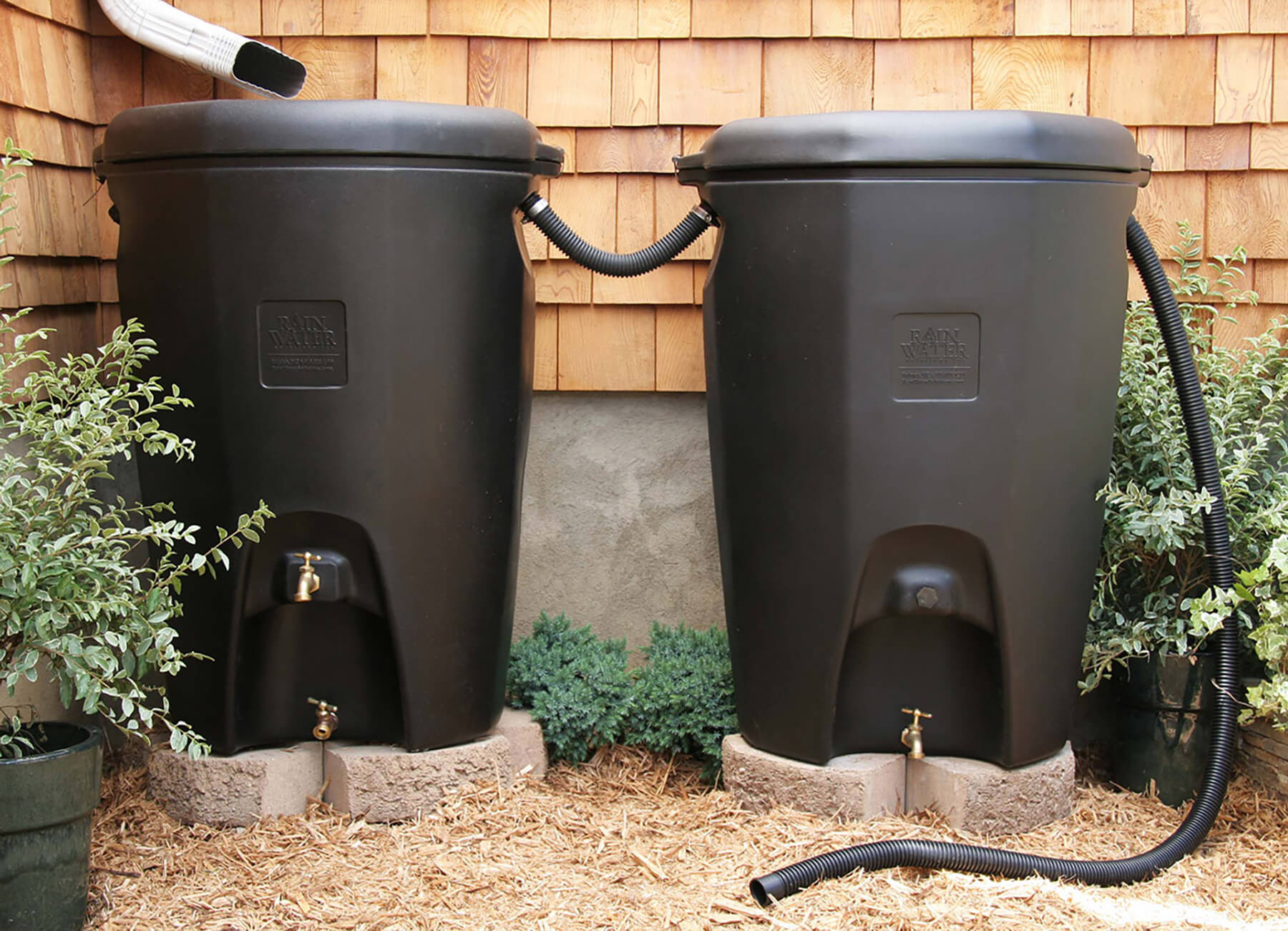Everything about rainwater for the aquarium
Table of contents
- Possible pollutants in rainwater and what to do about them
- Things to consider with rain gutters
- Which rain barrel is suitable for aquaristic purposes?
- Avoiding general water pollutants in rainwater collection
- Avoid seasonal water pollution
- Treating rainwater
- Alternatives to rainwater
We explain in more detail why tap water in the aquarium is not necessarily suitable for all fish, shrimp and aquarium plants in the article "Why soft water in the aquarium - and what are the options?". Especially for bee shrimp, bumblebee shr imp and tiger shr imp from biotopes with very soft and clean water, the often medium-hard to hard water from the tap is not necessarily the best choice. Also many aquarium fish like South American tetras or cichlids from South America, danios from Asia and many more come from very soft water and need at least for breeding a water with low water hardness and a pH below 7 in the aquarium. Many tropical aquatic plants also come from biotopes with very soft water and do not do well with hard tap water.
Rainwater appears to be a good alternative for many who do not want to use either an osmosis system or a desalinator - either for reasons of space, cost or handling. Rainwater is also very soft and slightly acidic and can be a good alternative also for shrimp aquariums or aquariums with soft water fish - but there are some things to consider.

Possible pollutants in rainwater and what to do about them
Pollutants can be released from the air in raindrops on their way from the clouds to the ground. In areas with high air pollution from industry, air traffic, or in large cities, using untreated rainwater in the aquarium is not a very good idea.
Even if the rainwater runs over the roof, passes through the gutter and is collected in a rain barrel or cistern, substances can dissolve, from bird droppings to deposits from the air, dust and pollen from flowers, hardeners from concrete components or cement, heavy metals from new, not yet oxidized gutters made of copper or aluminum, substances from tar paper, rot from the gutter, plasticizers from the rain barrel and much more.
To be considered with rain gutters
If gutters made of copper or aluminum are already somewhat older, they are covered by an oxide layer. Then normally heavy metals from the gutter no longer dissolve in the rainwater. Plastic gutters are in any case harmless if you want to collect rainwater for the aquarium.
Which rain barrel is suitable for aquarium purposes?
To collect water for the aquarium, rain barrels made of food-grade plastic - such as must barrels - are best suited. Here you can store the rainwater for quite a while without the risk of plasticizers dissolving in the water, as might be the case with the cheap black mortar buckets from building material stores, for example. Must barrels also come with a tight-fitting screw-on lid, which can come in handy when storing rainwater.
New mortar buckets, in particular, sometimes have a very strong smell. If you depend on their use, you should let them steam out for at least a few months before using mortar buckets to collect water for the aquarium.
Special rain barrels from specialty stores are also not food safe. The rainwater collected in them should therefore not be used directly in the aquarium. These rain barrels should be treated in the same way as mortar buckets.

Avoiding general water pollution when collecting rainwater
The rain gutters, downspouts are cleaned more often as well as the water barrels. In this way, possible water pollution caused by deposits can be reduced. Especially in uncleaned water barrels that are placed outdoors, quite a bit accumulates from leaves to other plant debris, insect larvae, drowned worms or snails, or worse. To put some stop to water pollution, depending on the location of the rain barrel, it may be necessary to cover the opening of the rain barrel with a piece of curtain fabric, a fine mesh or similar. This will keep small animals, leaves and the like from getting into the barrel.
Whenever the rain barrel is nearly empty, it should be thoroughly scrubbed out and coatings and biofilms removed. This can be done with a (of course new) toilet brush or a small scrubbing brush. Then rinse the rain barrel well to remove algae deposits and sediment as completely as possible.
Avoid seasonal water pollution
Rainwater can be more polluted depending on the time of year: In spring, the air is heavily polluted in places with pollen that collects in the rain and can severely pollute the rainwater collected for the aquarium. Therefore, during the worst pollen season, all rain barrels should be completely closed and no water should be collected. After long dry periods without rainfall, a particularly large number of pollutants collect in the air, which are then washed out with the first rains. Also in these cases, the water barrels are better closed, because the rainwater can be heavily polluted. Rain in the week after New Year's Eve fireworks is also not suitable for use in the aquarium.
Treat rainwater
If you want to be on the absolutely safe side and do not want to expose your shrimp to any risk, you should still treat the collected rainwater before using it in the aquarium.
For example, you can filter the water through activated carbon to eliminate pollutants. If the rain barrel is located close to a power supply, the collected rainwater can be treated directly on site with an internal filter equipped with activated carbon pellets. The filter equipped in this way is left to run in the full barrel for 24 hours. The activated carbon filling of the internal filter should be thoroughly shaken daily to keep the surface free of bacterial films. After approximately two weeks, the activated carbon filling of the engine filter should be replaced to ensure reliable removal of contaminants. If you use small mesh bags in the internal filter, you can prevent small particles of activated carbon from migrating into the impeller of the filter and blocking the filter wheel.
As an alternative to the internal filter, it is also possible to use a desalinator to completely soften the rainwater and remove inorganic pollutants such as ammonia, nitrite or nitrate. With the help of a sufficiently powerful pump, one can also use a rice filter with an activated carbon cartridge to clean the rainwater from pollutants.
The purified and treated rainwater is then treated with mineral salts for the aquarium. For soft water animals, a hardening salt is used which only increases the total hardness, while for all other aquarium animals a mineral salt is used which increases both the carbonate hard ness and the total hardness.
Alternatives to rainwater
If rainwater becomes scarce during dry spells or periods of heavy water use, you can switch to osmosis water or deionized water - which you can pick up by the canister at the pet store, hardware store, supermarket or from aquarium friends.
